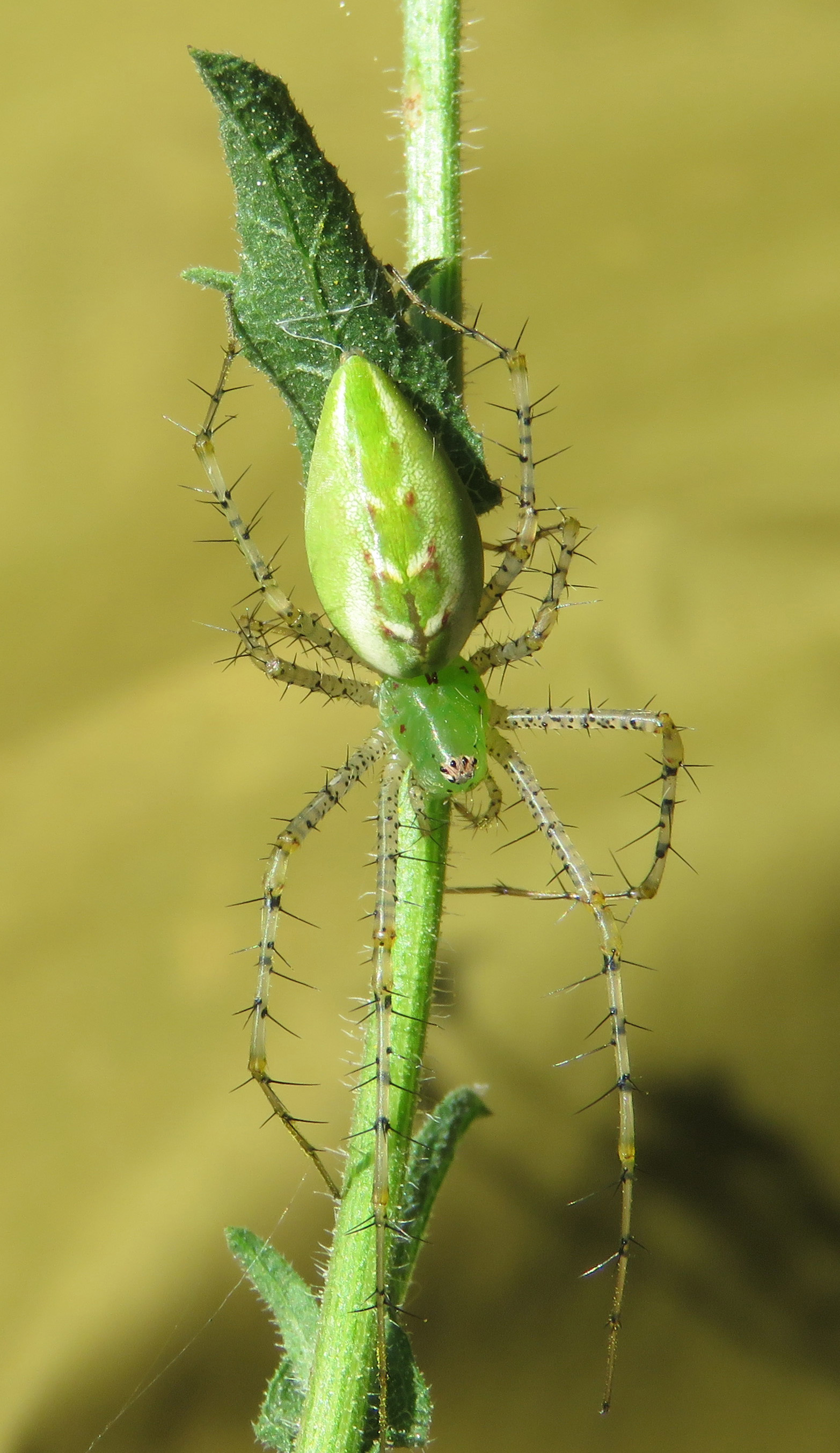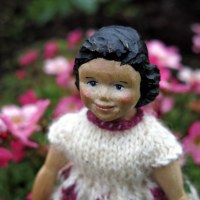Textile Highlights at Centre Charlemagne in Aachen
Along with our visit to Aachen Cathedral and Treasury, we also visited the Centre Charlemagne. I had been hoping that this museum would focus on the life of Charlemagne, but it is more focused on the history of Aachen itself. Its references to Charlemagne are more about how he has been remembered in the city and utilized by it to draw visitors.
Weaving in Aachen in Charlemagne’s Time, circa 800 A.D.
There was a demonstration warp-weighted loom set up, which I was glad to see. This type of loom was the one used throughout the ancient world until the horizontal loom began to take over in the Middle Ages.¹ I took a lot of pictures, because I would like to build one of my own some time, but it was too dim for most of the pictures to turn out well enough to post.
They also had a bone drop spindle, needles, and tiny tablet cards for weaving patterned tapes. There were kiosks with spinning and weaving videos, but they of course didn’t work. (I visit a lot of museums, and it seems those kiosk stations are never in working order.)
Fake News, circa 1172
Geolina163 [GFDL (http://www.gnu.org/copyleft/fdl.html) or CC BY-SA 3.0 (https://creativecommons.org/licenses/by-sa/3.0)%5D, from Wikimedia Commons
The audioguide for this relief statue related an amusing story (and I am going strictly on my memory here, so the details may be way off) — that in about the year 1172, the city council of Aachen sent a letter to their current emperor, telling him that hundreds of years before, Charlemagne had re-discovered hot springs in Aachen that had been lost since Roman times. Charlemagne had liked the springs so much that he awarded the city special privileges, and the council attached a copy of that document, suggesting that those privileges should be renewed now, almost 400 years later. The emperor granted their request.
The only thing is, the whole story was made up by the city council! But it became “common knowledge” and has been the subject of many pieces of art over the centuries.
Marketplace, circa 1600

Marktszene mit Aachener Gebauden, (Market scene with Aachen buildings) Henrik van Steenwijck, Frankfurt, end of the 16th century. Lower left corner of the painting.
This wonderful painting of a market place from the late 1500s attracted my attention, but, thinking I would surely find a good version of it online to embed here, I didn’t take a picture of the entire painting. (I did find in online, with lots of information, here at the RKD, Netherlands Institute for Art History, but I am not quite sure I am allowed to post it, so I won’t.)
Steenwijcks idealansicht der wohlhabenden Stadt der Renaissance versetzt das Aachener Rathaus and die Marienkirche en ein fiktives gebäudeensemble. Das Rathaus ist perspektivish von Norden, die Münsterkirche von Westen dargestellt. Die szenen auf dem uberdimensioniert Marktplatz sind typisch für die niederländerische Malerei dieser Zeit.
— caption card from the Centre Charlemagne
Steenwijck’s ideal view of the prosperous city of the Renaissance puts the Aachen town hall and St. Mary’s church in a fictional building ensemble. The town hall is in perspective from the north, the Cathedral from the west. The scenes on the oversized market place are typical for the Dutch painting of this time.
— from Google Translate
In researching this painting, I found out that the artist was one of the earliest known painter of architectural interiors. His son, who followed in his footsteps, married a woman who also painted architectural subjects, and they were especially well known for painting church interiors. That will be an interesting trail to follow in the future!
But for now, here are some of the details I liked, showing a variety of bonnets, ruffs, hats, and capes on the ladies, as well as some men putting their best feet forward.
That is a painting to get lost in, absorbing all the details.
1900 – Walking Machine
This is a model of machine for walking cloth. The process of weaving criss-crosses threads into a web, but more processing needs to be done afterward, to help the threads both “bloom”, or puff out a little, and to compact the threads more closely together, into a supple piece of cloth. Another term for it is “fulling”–
A finishing process in the manufacture of woolens and worsteds in which the newly woven cloth is felted or compressed into a smooth, tight finish. The material is subjected to moisture, heat, friction, and pressure, causing it to shrink considerably in both directions, becoming compact and solid.
–Dr. Isabel B. Wingate, Fairchild’s Dictionary of Textiles.
The model looks a lot like a loom — I am guessing that rolls of woven cloth were set onto the machine, and then automatic steaming and stamping followed, but I am not sure.
All in all, it was a nice little museum, and it helped us picture life through the centuries in that region.


























You always post about the most remarkable things. I don’t often comment, but I wanted you to know that I really enjoy your work.
Thank you! I am glad you like the posts!
I love the juxtaposition of the fulling machine with the artworks behind it! And how on earth does tablet weaving work…?
Tablet weaving is sort of like a very narrow loom — one warp is threaded through each of the holes in the card. You can have all four be the same color, or you can use 2 colors or 4, but you have to plan it out ahead of time, because you are limited to those colors for the whole narrow strip. Then you put the threads under tension, and the spaces in the card give you a place (called a shed) to run a weft in between the warps.
Then you rotate the cards, a different shed opens, and you run the weft through back the way you came. The order and direction in which you turn the cards determines which warps are on top of the finished band, where they will appear as dots of color in each row. Depending on what colors you used, and how you align the dots, you can get the effect of stripes or arrows or diamonds or swirls.
I think you could visualize your design options as very simple quilt-as-you-go blocks — let’s say that you made a lot of navy blue blocks with yellow backs, and then some red blocks with green backs — the way you set them next to each other could make them look wider or longer in the overall finished piece. You could flip blocks over to get more combinations. But unlike in quilting where you can put any color anywhere you want it, you would be tied to your original combinations of colors.
And it has to be narrow, because the threads gets so crowded, you can’t manage turning them if there are too many. Hope that wasn’t too much information! 🙂
That was a great description! I have a concept of how it works, but I’d need to see someone doing it to bring it to life in my brain. Not, I hasten to say, that I’ll ever be giving it a try, but I’m interested in that sort of thing… Thanks for taking the time to clarify.
You could use it for the borders between blocks in your quilt-as-you-go quilts! 🙂
Lovely idea, but…. not!
I hope the museum staff appreciated your enthusiasm and interest. I don’t think all that many of their visitors have your knowledge. I enjoyed the closeups of the marketplace painting. It’s why I love Dutch genre paintings, for their glimpses of life as it was then.
In all the museums I went into, the staff was always polite and available, but didn’t really jump into interactions, which was fine with me — I felt too apologetic about my German to try to ask questions. There was always someone who spoke English, but I think they expected more of the “Where do I hang my coat?” type questions, and not “Could you please tell me if linen was grown here in the 15th century, and if so, did they use it for sail cloth?” 🙂
Your questions must have taken them aback, though sometimes you will luck into someone with a wealth of knowledge who is thrilled to impart it.
Those were the questions in my head, but I spared the museum staff. I have had trouble getting those questions answered even when both of us in the conversation had the same native language. I did enjoy expanding my vocabulary by learning the German words for silk, satin, sails, etc. just by reading caption cards in the museums.
Love this piece. Wonder how long it took the women to get dressed with that ruff and all. Maybe only rich ladies with ladies in waiting to help dress them could do that. That up and down weaving machine must have taken hours to work with. Your articles always make me think! That’s a good thing!
Yes, the caption on the painting said it was an idealized market place — it would be nice to know if working women really had ruffs like that, or if the artist was just making everyone look fashionable. I’m glad you liked the post, I had a lot of fun looking at the equipment and painting!
What a gem of a museum for the lover of textiles! Really cool stuff. Okay, but what I really want to know is when you’re going to build your warp-weighted loom??! (BTW–good description tablet weaving! I’ve tried it and got very messed up in the process!)
I will be building my warp-weighted loom just as soon as I get a spinning wheel and master spinning, use up all my fabric scraps, and finish hand-quilting all the vintage tops I have bought! 🙂
to answer KerryCan Yes, when Pigs Fly! LOL Those paintings, one could spend hours looking at them. That fulling machine beats ‘beating’ fabric by hands or feet! Thank you for taking the time to post this.
Too many interests, too little time! 🙂
Congratulations! I’ve included your blog in INTERESTING BLOGS in FRIDAY FOSSICKING at
https://thatmomentintime-crissouli.blogspot.com/2018/12/friday-fossicking-14th-dec-2018.html
Thank you, Chris
It seems unfair that we only get one lifetime.. yet there is so much to learn and experience. I always learn so much from your posts… in many ways, I feel as if I’ve come home. My interests are varied and time consuming, and every now and then, I have to put all but one or two things aside, to concentrate on the priorities…while my threads and fabric and art materials languish beside the empty journals which are calling out for attention.. as I wander in my oft neglected garden.
Still, try as we might, it seems a futile attempt to to try to get more than 24 hours in a day… how can anyone ever feel bored?
You are so right! I don’t even have a job,and I have so many more labor-saving devices than my grandmother and great-aunts had, but I think they got much more done than I do, and in fine crafts like crocheting lace, making their own tailored clothes, etc. But I think it is good to have projects and plans holding our interest and keeping us alert, even if we don’t get to them all! 🙂
I think that we have far more opportunities than they did, to learn, to explore, to communicate.. so many distractions and so much at our fingertips. We like to try everything that comes our way.. and that’s ok. It keeps us active, in mind and body… and we live longer than our ancestors did. The joy is often in the dreaming and planning… and there’s no penalty if we don’t get everything done.
You are so right, I love my planning time! And I love to try a variety of activities too.
Merry Christmas!